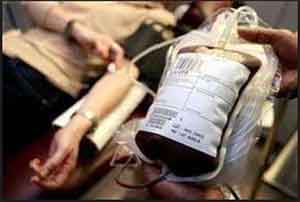- Home
- Editorial
- News
- Practice Guidelines
- Anesthesiology Guidelines
- Cancer Guidelines
- Cardiac Sciences Guidelines
- Critical Care Guidelines
- Dentistry Guidelines
- Dermatology Guidelines
- Diabetes and Endo Guidelines
- Diagnostics Guidelines
- ENT Guidelines
- Featured Practice Guidelines
- Gastroenterology Guidelines
- Geriatrics Guidelines
- Medicine Guidelines
- Nephrology Guidelines
- Neurosciences Guidelines
- Obs and Gynae Guidelines
- Ophthalmology Guidelines
- Orthopaedics Guidelines
- Paediatrics Guidelines
- Psychiatry Guidelines
- Pulmonology Guidelines
- Radiology Guidelines
- Surgery Guidelines
- Urology Guidelines
RCOG Guidelines for Blood Transfusion in Obstetrics

Obstetric haemorrhage remains a major cause of maternal mortality in the UK and is now the third leading cause of direct maternal deaths, accounting for approximately 10% of direct deaths.At the same time Blood transfusion may be a life-saving procedure but it is not without risk.Royal College of Obstetrics and Gynaecology has released updated version of Guidelines for Blood Transfusion in Obstetrics.
Major Recommendations:
- Oral iron should be the preferred first-line treatment for iron deficiency
- Active management of the third stage of labour is recommended to minimise blood loss.
- Anaemia in pregnancy:
- First trimester haemoglobin (Hb) < 110 g/l,
- Second/third trimester Hb < 105 g/l,
- Postpartum Hb < 100 g/l, (British Committee for Standards in Haematology (BCSH) guidance.)
- All pregnant women should be screened for anemia at first visit and at 28 weeks. Women with multiple pregnancies should have an additional full blood count done at 20–24 weeks.
- Oral iron is the initial management.
- Further tests to be performed if there is no demonstrable rise in Hb after 2 weeks in spite of compliance.
Treatment and management of anemia:
- Antenatal dietary advice
- Oral iron is the preferred first-line treatment for iron deficiency.
- Indications for parenteral iron
- Intolerance to oral iron
- Doubtful patient compliance
- Term pregnancy (insufficient time for oral therapy)
- Active management of third stage of labour.
- Recombinant human erythropoietin is indicated only on the advice of a hematologist
General principles of blood transfusion:
- Valid Consent for blood transfusion should be obtained and documented. Where not feasible, retrospective information on blood transfusion should be provided.
- Blood group and antibody status must be checked at booking and at 28 weeks of gestation.
- In high-risk pregnancies, (e.g. placenta praevia,) and with no clinically significant alloantibodies, group and screen samples should be sent once a week to exclude or identify any new antibody formation.
- Hb < 70 g/l when the patient is in labour or in the immediate postpartum period, the decision to transfuse should be made according to the individual’s medical history and symptoms.
Blood product specification in pregnancy and the puerperium:
- ABO-, rhesus D- (RhD-) and K- (Kell-) compatible red cell units should be transfused.
- Cytomegalovirus- (CMV-) seronegative red cell and platelet components should be provided for elective transfusions during pregnancy.
- Predelivery autologous blood deposit is not recommended.
Cell salvage
- Recommended if the anticipated blood is expected to exceed 20% of estimated blood volume.
- Consent should be obtained.
- To be performed only by multidisciplinary team with regular experience
- During caesarean section in RhD-negative, (previously nonsensitised women and where cord blood group is confirmed as RhD positive (or unknown)), 1500 I.U anti-D immunoglobulin should be administered following the reinfusion of salvaged red cells.
- A maternal blood sample should be taken for estimation of fetomaternal haemorrhage 30-40minutes after reinfusion in case more anti-D is indicated.
Management of obstetric haemorrhage with blood components:
- A protocol on management of major obstetric hemorrhage has to be made and has to be updated and practiced annually.
- Clinicians must apply mechanical strategies to reduce postpartum loss
- In an emergency where the group is unknown group O RhD-negative red cells should be given
- FFP at a dose of 12–15 ml/kg should be administered for every 6 units of red cells during major obstetric hemorrhage to reach target PT and APP ratios less than 1.5 x normal.
- Cryoprecipitate at 5-unit pools should be administered early in major obstetric hemorrhage to maintain fibrinogen levels above 1.5 g/l.
- The FFP and cryoprecipitate should ideally be of the same group as the recipient.
- Group compatible Platelets may be transfused at levels of 75 x 109/l.
Pharmacological strategies for management of major obstetric haemorrhage:
- The use of rFVIIa may be considered as a treatment for life-threatening postpartum hemorrhage (PPH), but not as substitute for embolisation or surgery, or transfer to a referral centre.
- Use of fibrinogen concentrate is not routinely recommended.
Patients who refuse transfusion:
- Hb should be optimised prior to delivery
- Consent/refusal of blood and components or other transfusion-sparing techniques should be discussed and documented during the antenatal period.
- Pharmacological, mechanical and surgical procedures to avert the use of banked blood and blood components should be considered early
- Early use of iron replacement is indicated with, if needed,
- The woman may wish to wear a ‘no blood’ wristband to make it clear to all members of the treating team that blood transfusion is not to be used.
For more details click on the link :
www.rcog.org.uk/globalassets/documents/guidelines/gtg-47.pdf

Disclaimer: This site is primarily intended for healthcare professionals. Any content/information on this website does not replace the advice of medical and/or health professionals and should not be construed as medical/diagnostic advice/endorsement or prescription. Use of this site is subject to our terms of use, privacy policy, advertisement policy. © 2020 Minerva Medical Treatment Pvt Ltd